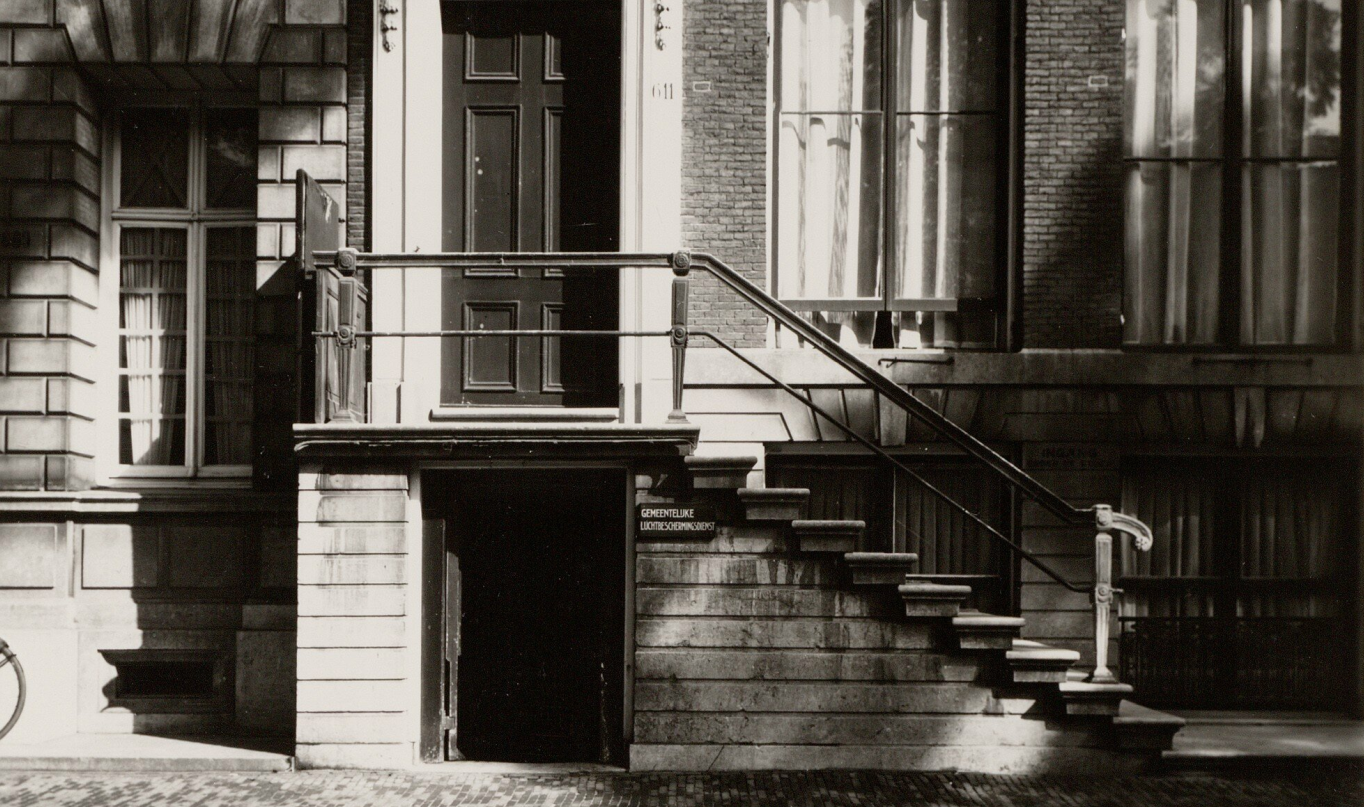Municipal Air Raid Precaution Service
The Municipal Air Raid Precaution Service ensured compliance with the measures against air raid hazards in wartime.

Keizersgracht 611, met de Luchtbeschermingsdienst in het sousterrain.
Fotograaf C.F. Jansen (1895-1961). Beeldbank Stadsarchief Amsterdam. Copyright: Publiek domein
Address: Since 1939 established at Keizersgracht 609-611, Amsterdam.[1]
This municipal service was established in 1937. Its task was to limit the number of victims in the event of an air raid as much as possible by making preparations - such as raising alarms, ordering blackouts out and setting up air raid shelters - to provide assistance to those affected and to limit material damage.[2]
On 16 May 1940, the German authorities announced that the initial suspension of air protection had been lifted. Blackouts and unwanted light emissions were strictly monitored.[3] In June 1940, mayor De Vlugt once again emphasized the great importance of adequate blackouts. The police and the Air Protection Service both had a role in monitoring this.[4]
Jacques Presser writes in Ondergang that on 1 July 1940 General-Major der Ordnungspolizei Schumann ordered that (among other things) all Jews should be expelled from the Air Defense before the fifteenth. The reason was that members of the Air Raid Service alledgedly had incited demonstrations on Prince Bernhard's birthday.[5]
Police and Air Raid Wardens could take action if light was emitted during blackout hours. This happened at Prinsengracht 263 on 4 March 1941, when two police officers forced the door open in the evening to turn off a lamp that was still alight.[6]
In January 1942, a German regulation was introduced that tightened air raid precaution measures. Acting in violation of regulations (for example concerning blackouts) could be punished with detention or a fine.[7]
Footnotes
- ^ Algemeen Handelsblad, 10 september 1939, ochtendeditie; Bianca Stigter, Atlas van een bezette stad: Amsterdam 1940-1945, Amsterdam: Atlas Contact, 2019, p. 177.
- ^ Stadsarchief Amsterdam (SAA), toegangsnr. 5227, Archief van de Luchtbeschermingsdienst: Inleiding op de inventaris van het archief van de Luchtbeschermingsdienst, versie 21.1, 30 mei 2012.
- ^ ʼGeen zichtbaar licht!‘, Nieuws van den Dag, 16 mei 1940.
- ^ ʼVerduistering moet afdoende zijn‘, Algemeen Handelsblad, 12 juni 1940, ochtendeditie.
- ^ J. Presser, Ondergang. De vervolging en verdelging van het Nederlandse Jodendom, 1940-1945, 's-Gravenhage: Staatsuitgeverij, 1965, deel I, p. 18-19.
- ^ SAA, Gemeentepolitie Amsterdam, inv. nr. 6439: Rapporten Marnixstraat, 4 maart 1941, mut. 10.00 n.m.
- ^ ʼLuchtbeschermingsverordening‘, Verordeningenblad voor het bezette Nederlandsche gebied 1942, p. 57-67, aldaar p. 65; Anne Frank, Diary Version B, 25 March 1943, in: The Collected Works, transl. from the Dutch by Susan Massotty, London [etc.]: Bloomsbury Continuum, 2019.